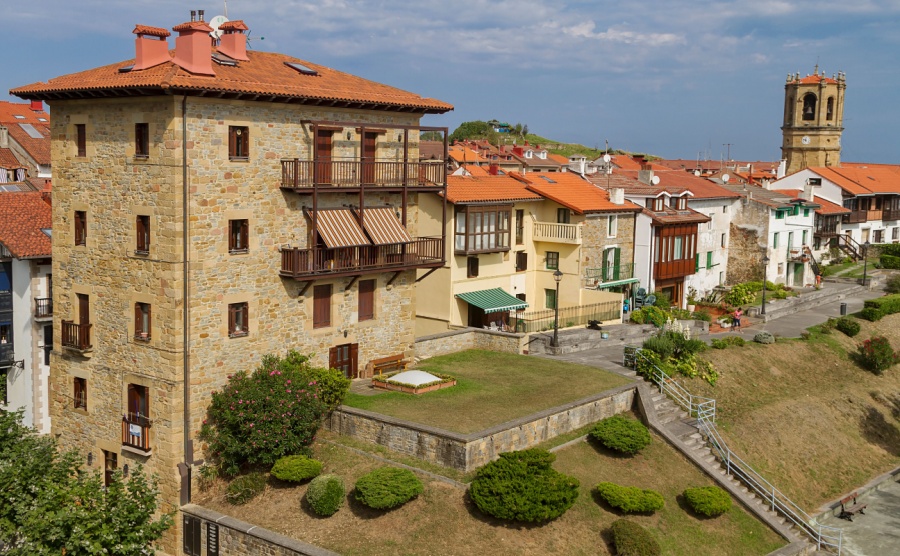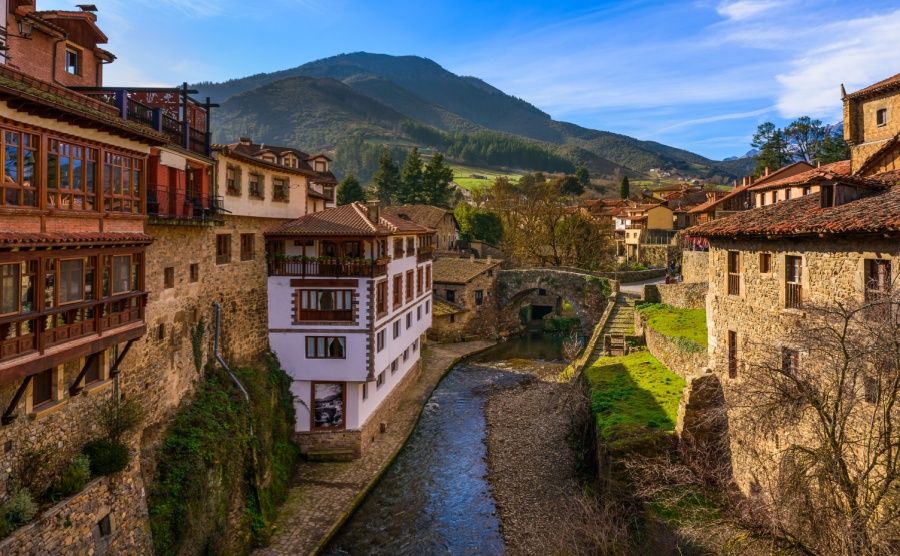Northern Spain and its Atlantic beaches don’t attract as many international property buyers as the southern costas. But as anyone who has followed the Camino Norte pilgrimage route knows, it’s just as beautiful. See where you could buy a holiday home or escape to a greener, cooler, Spanish landscape.
Wayfaring Christians began trekking along Spain’s northern Atlantic coastline in the 9th Century, creating what became an important section of the famous Camino de Santiago trail. Another world to the bustling tourist resorts that now line the country’s sizzling Mediterranean Costas, these days it’s not only pilgrims who are discovering this lush unspoilt area with its special charm and stunning natural scenery. Lace up your walking boots for a whistle-stop hike of the Costa Verde…
Los Ba os, Spain
Pedan as Oeste, Spain
Casa Nova - Sant Aman - Pedralta
San Sebastián
Zarautz
Getaria
Mundaka
Guernica
Potes
Santillana del Mar
Liérganes
Bárcena Mayor
Llanes
Ribadesella
Colunga
Villaviciosa
Ribadeo
Just visiting the cities at the start and end of the Norte (northern) route of the Camino de Santiago (St James’s Way) would be enough to blow you away. First the stylish coastal resort of San Sebastián, foodie capital of Spain and a global force in gastronomy, then onto historic Santiago de Compostela, with its beautifully preserved old town and monumental cathedral that together form one of Christianity’s most important pilgrimage sites.
But the region has so much more! So take time to explore some or all of 800 kilometres of the Camino route that connects these two cities. It spans much of Spain’s so-called Costa Verde, the ‘green’ regions of Galicia, Asturias, Cantabria and the Basque Country. Here are some highlights and reasons for considering this corner of Spain as an alternative to the better trodden Costas.
Find homes in Spain via our property portal.
A forgiving climate where travel is easy
For an idea of weather, clue is in the name. It rains a fair bit in the Costa Verde, typically between November and April. The boon is the rich flora and fauna spread across a landscape of glad-dotted valleys, wooded mountainsides and lush rolling meadows. It means animals thrive, plants grow and the rich cuisine is truly farm-to-fork, about as fresh as the seafood…
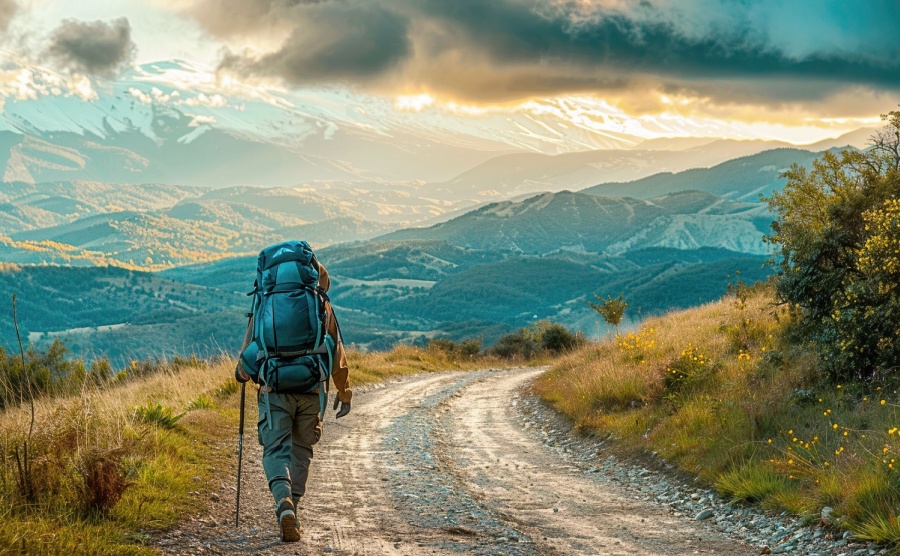
A world away from the costas but just as beautiful, the Camino Norte
Stick to the coast and the region has as temperate maritime climate, so summer temperatures are high. Crucially, high season is not as hot as the Med coast, which is an attractive proposition as climate change makes the southerly Costas increasingly unbearable for some. Spaniards have known all this for a long time and many from Madrid and Spain’s wider interior, head to the Atlantic seaboard for their precious summer holidays. Motorways, largely fast and traffic-free outside of cities, mean driving is an option and makes airport transfers easy. And Spain’s vision to connect all major cities by high-speed train means today rail is also a pleasurable and more sustainable way to get there.
Though easy to think of as a summer retreat, international residents can enjoy many of Spain’s best winter fiestas.
Last November a landmark section of track connecting the Asturian capital, Oviedo, with Madrid and using a series of tunnels through the Cantabrian Mountains opened. The €4bn (£3.4bn) project, which includes Europe’s seventh longest tunnel and took 20 years to complete, has reduced travel time between Madrid and Asturias by more than an hour.
From abroad, flying brings a choice of airports, including San Sebastián, Bilbao, Santander, Oviedo, Santiago de Compostela, Vigo and A Coruña. Or take the car and hop on the overnight ferry to Santander or Bibao!
The best food of the Basque Country on your doorstep
The Camino de Santiago Norte kicks off in earnest at San Sebastián. The city’s reputation for gastronomy – its 18 Michelin star restaurants include three three-star venues, is typical of the region. The Basque population spend more on dining out than any other Spanish region, according to recent data from Spain’s National Institute of Statistics. The average Basque spent €15,570 on restaurant bills in 2023, 18.7% above the national average.
A favourite with wealthy Madrileños, San Sebastián is home to some of Spain’s most desirable prime real estate. Bilbao is the region’s other coastal metropolis, a larger port city with an industrial heritage transformed in recent years into an arty destination, triggered by its Guggenheim Museum – property is more diverse and cheaper than San Sebastián.
For more affordable coastal homes follow the Camino westwards from San Sebastián to one of the seafront towns, where a starting budget of €100,000-€200,000 should achieve an apartment on or near the seafront. These include Zarautz, where the sweeping beach is said to be the longest in the Basque, the harbour village of Getaria, where you can feast on freshly landed fish, laid-back Deba with is pretty promenades, surfing hot spot Mundaka, Ondarroa where medieval architecture overlooks a pretty river mouth, and bustling Bermeo, with is old town and large marina and port, one of the region’s most important.
The inland towns of the Basque Country shouldn’t be overlooked for a more rustic lifestyle. Most have a rich agricultural, mining or textiles heritage. Typically surrounded by green rolling hills with views of the Cantabrian Mountains, top picks could include Lezo, Laguardia, Guernica and ancient Balmaseda.
If gastronomy is leading your home search, these are the best spots in Spain for food and drink and Spain’s best restaurants.
Own a home in one of Cantabria’s beautiful villages
Continuing westwards, the Camino enters Cantabria, its hub being the majestic waterfront city of Santander. This rugged region offers a diverse range of landscapes and ticks just about every box for adventurous outdoorsy types who enjoy being immersed in nature and local culture. The Cantabrian Mountains, which are home to wild brown bear and wolves and include the dramatic Picos de Europa range, track its coastline and are integral to the character of the region. The region is also home to a number of important cave networks and paintings.
Cantabria’s rolling landscape between the mountains and the coast is dotted with sleepy farming villages, distinctive for the wooden architecture and usually with an ancient church or monument. The coast is a string of traditional resorts and historic fishing towns, typically centred around sweeping sandy beaches, many offering surfing. Key ones include Laredo, Castro-Urdiales, Laredo, San Vicente de la Barquera, Santoña, Suances and Comillas.
Ready to view properties? Download your free copy of Viewing Overseas Property, your guide to planning a successful viewing trip
The Camino route also takes in old villages like Santillana del Mar, one of seven Cantabrian towns included in the list of Most Beautiful Villages in Spain (the most of all Costa Verde regions). The others are Liérganes, Bárcena Mayor, Comillas, Potes, Carmona and Mogrovejo.
Live upon the dramatic Asturias coastline
Now deep into the Costa Verde, the Camino enters Asturias. Not unlike Cantabria, it has mountains – it shares the Picos de Europa range with its neighbour, and an even longer coastline of fishing towns, dramatic cliffs and sandy bays. It’s a hub for all things outdoors, from trekking and horse-riding to canoeing down rivers and surfing. Skiing is also available in the winter months.
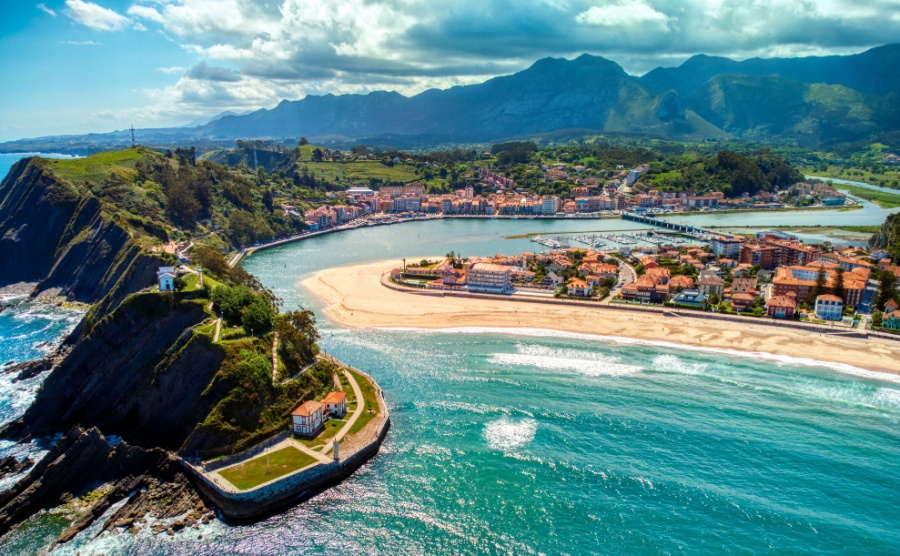
Ribadesella, Asturias
One of the biggest movements in Asturias right now is food, as it eyes up the gastronomic cachet of nearby Basque Country. It’s an especially significant year for capital city Oviedo, after it was crowned Spanish Capital of Gastronomy 2024. Hearty meat and bean dishes, fish and seafood galore and rich dairy produce, it has it all. In fact, Asturias is the largest cheesemaking region in Europe (more than 300 cheeses are made there). It’s also the nerve centre of northern Spain’s famous cider-making industry and one of the world’s largest producers of natural cider. You can imagine what the food festivals are like!
Wherever you are, filling your belly on the local cuisine should never be a problem. On the coast, you’ll be wowed by these fishing towns and resorts, where freshly landed catch is always on the menu: Llanes, Lastres, Ribadesella, Gijón, Avilés, Luanco, Cudillero, Luarca, Puerto de Vega and Navia.
Off the coast and sticking to the Camino, Colunga and Villaviciosa would give you a small taste of Asturian village life. Wood and stone feature heavily in the local architecture and look out for the distinctive ‘horreos’, which are granaries raised on stone pillars to keep pests out.
Make a life in Galicia, the most beautiful region in Spain
Entering Galicia for the final stretch of the Camino, the first notable place is Ribadeo. From this charming estuary town to Santiago de Compostela Cathedral is 190 kilometres. Three-quarters the size of Holland and often considered the most beautiful region in Spain, Galician geography is diverse. Common throughout are lush forests, rivers and waterfalls, rolling valleys, a wild rugged coastline and unspoilt beaches of impossibly white sand. Its Celtic heritage gives it a mystical edge, which is amplified by its landscape and sleepy ancient villages.
Often considered the most beautiful region in Spain, Galician geography is diverse
An ideal sampler for the region, the Camino Norte passes through biosphere reserves, including the area around the Eo River and area known as Terras do Miño. Highlights along the route include the villages of Lourenzá, Mondoñedo, Abadín, Vilalba, Baamonde, Miraz, Sobrado dos Monxes, Arzúa and Pedrouzo.
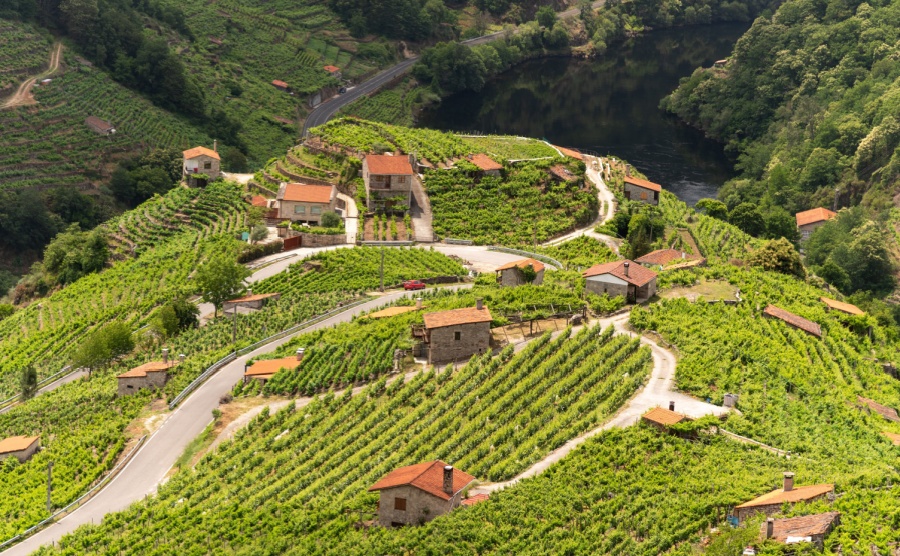
The Miño River flowing through the vineyards of Ribeira Sacra in Galicia
For aficionados of affordable, off-the-beaten-track character homes, buying in Galicia and north-west Spain is one of the richest hunting grounds in Europe. Besides an abundance of slate-roofed cottages and farmhouses, the countryside is dotted with old windmills, chapels, hermitages and ancient forges. Take your pick!


